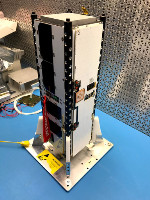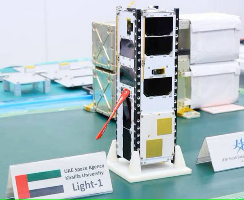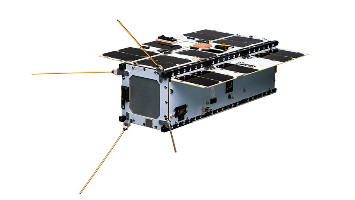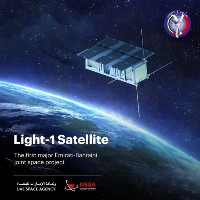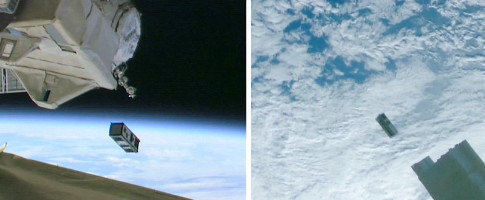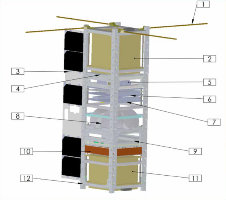| Spacecraft name | Light-1 (RAADSat, RAAD, Rapid Acquisition Atmospheric Detector) |
|---|---|
| Spacecraft type | CubeSat |
| Units or mass | 3U |
| Status | Reentry 2023-01-16. Was operational (News on 2022-02-23 and IAC 2022 paper) |
| Launched | 2021-12-21 |
| NORAD ID | 51509 |
| Deployer | J-SSOD (JEM Small Satellite Orbital Deployer) |
| Launcher | Falcon 9 (CRS-24) |
| Deployment | Deployed from ISS on 2022-02-03 |
| Entity name | Khalifa University of Science and Technology |
| Institution | Space agency |
| Entity type | Academic / Education |
| Nation | United Arab Emirates |
| Partners | Khalifa University, NYU Abu Dhabi |
| Oneliner |
Study TGF flashes emitted via thunderclouds from Earth's atmosphere using gamma-ray detector. |
| Description |
Study Terrestrial Gamma-ray Flashes (TGFs). TGFs are sudden bursts of gamma-ray radiation occurring on millisecond timescales, which are triggered by lightning or thunderstorms and channeled into outer space. Several TGF models have been proposed over the last decade however, due to the lack of experimental data, production mechanism, propagation and typical energy range are still open questions. The RAADsat payload, developed at New York University Abu Dhabi (NYUAD), is sensitive to the energy range 20 keV – 3000 keV. It consists of two arrays of crystals, the first array (CUBE 1) is equipped with four Low Background Cerium Bromide (CeBr3(LB)) crystals of 23 mm X 23 mm X 45 mm (LxWxH) dimension and four R11265U-200 photomultiplier tubes manufactured by Hamamatsu, while the second (CUBE 2) with two CeBr3(LB) crystals and two Lanthanum Bromo Chloride (LBC) crystals of the same dimension and four S13361-6050AE-04 MPPC manufactured by Hamamatsu. The electronics readout of CUBE1 and CUBE2 has been designed in collaboration with AGE Scientific srl taking into account the constraints of a space mission: redundancy, radiation hardness, reliability and low power operations. The time resolution of the system is 100 ns and it will provide microsecond absolute timing for correlation with lightning data. The immediate scientific goals are to explore the average atmospheric cut-off at low energies, search for a 511 keV electron-positron annihilation line, and search for microsecond structure in the light curves of the brightest TGF bursts. The RAAD mission is the winner of the Mini-satellite competition held by the UAE Space Agency in 2018, and is expected to be fully developed and launched by JAXA for deployment from the ISS by the end of 2020. |
| Sources | [1] [2] [3] [4] [5] [6] [7] [8] [9] |
| Photo sources | [1] [2] [3] [4] [5] [6] [7] [8] |
| COTS subsystems |
|
| Subsystems sources | [1] |
| On the same launch |
Last modified: 2023-06-03
